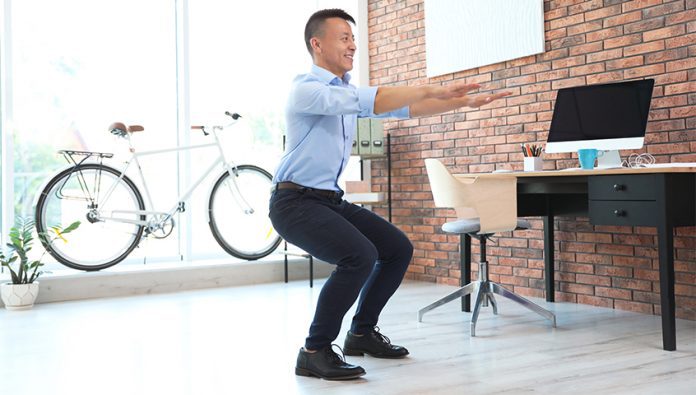Unless you still have youthful exuberance, you likely experience creaking, groaning joints while extricating yourself from a lengthily occupied chair or couch. This happens to everyone at some point, but, when sedentary periods become extended, it’s time to consider the sobering effects on the body.
Jimmy Robinson, director of physical therapy with Oklahoma Sports and Orthopedic Institute in Oklahoma City, says he and his colleagues often treat the negative results of sedentary lifestyles.
“A large portion of our patient population sees us because they sit too much and it leads to so many different orthopedic problems,” he says.
Robinson cites muscular imbalances, tightness in some areas of the body and weakness in others, and problems with shoulder movement that can lead to rotator cuff tears, tendonitis, bone spurs and other injuries.
Because many people sit for large portions of every day – at work and home, and while commuting – poor posture can occur.
Yogesh Mittal, a surgeon at The Orthopaedic Center in Tulsa, says sitting slumped in a chair can actually change the shape of the spine, creating “a flat back appearance.”
Mittal and Robinson don’t mince words when discussing the long-term damage of sitting for long stretches day after day.
“Studies say if you sit for six [waking] hours a day, you increase the likelihood of early death by 19 percent,” Robinson says.
However, a two-word solution exists for those wanting to reverse or neutralize the ramifications of sedentary living: move more. That’s not as hard as you think, experts say; frequent, small amounts of movement throughout the day can do wonders.
“People should try to stand up and walk around every 30 minutes or so and maintain a healthy sitting posture,” Mittal says.
Robinson advises sitting for “no more than 20 minutes out of every half hour. Try to stand at least 8 minutes out of every half hour and then try to actually move 2 minutes out of every half hour.”
You don’t have to have a specific destination for the movement, he says. It can be simple exercise in place or at a desk. He suggests extending your legs and pumping your ankles or doing a handful of squats.
“People can come up with what seems to work for them – that doesn’t distract them from their job – but allows them to increase the circulation and increase the alertness that they have as well,” Robinson says.
Mittal suggests standing up, twisting and flexing your back, stretching your neck from side to side, and stretching your hamstrings and calves.
These simple movements can have a dramatic impact. Robinson says you should remember two key components to become more active. First, make increased movement a priority because your life and quality of life depend upon it. Second, have a specific plan for making it happen.

























